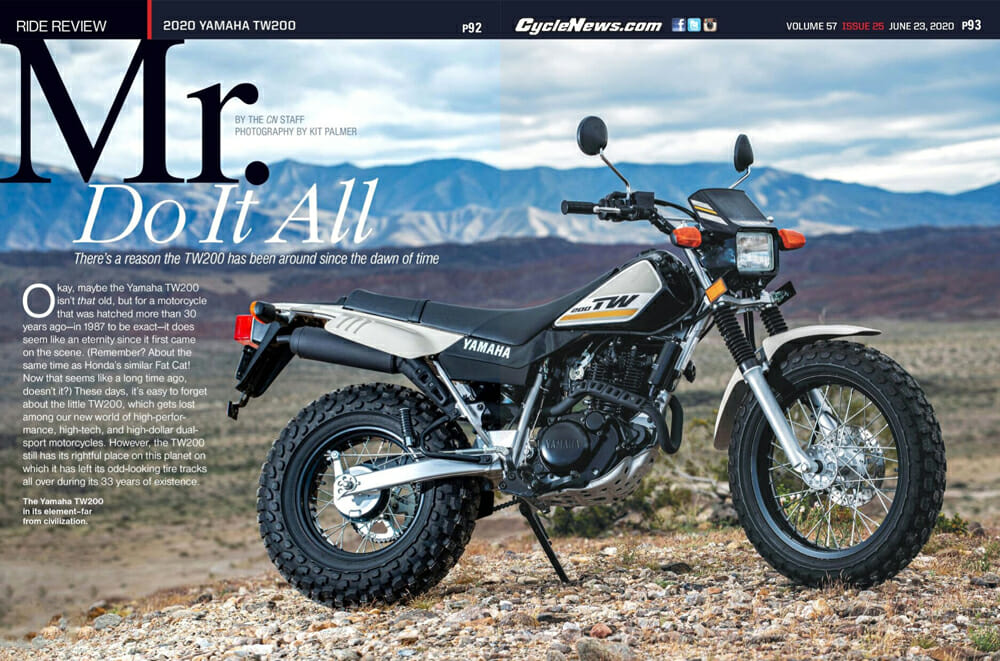Cycle News Staff | June 28, 2020
There’s a reason the TW200 has been around since the dawn of time.
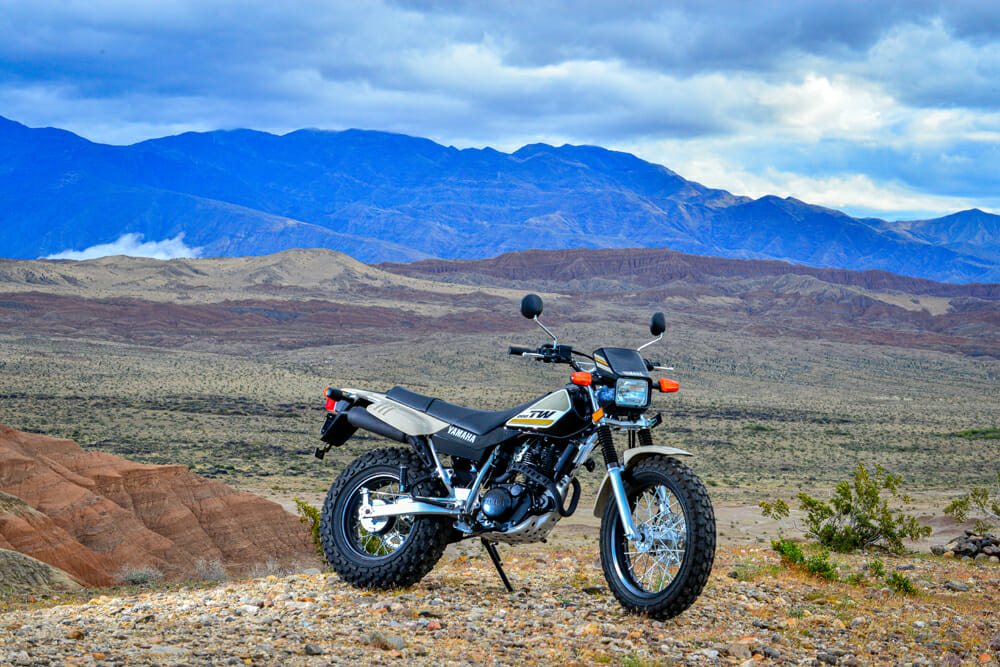 The Yamaha TW200 in its element–far from civilization.
The Yamaha TW200 in its element–far from civilization.
Photography by Kit Palmer
Okay, maybe the Yamaha TW200 isn’t that old, but for a motorcycle that was hatched more than 30 years ago—in 1987 to be exact—it does seem like an eternity since it first came on the scene. (Remember? About the same time as Honda’s similar Fat Cat! Now that seems like a long time ago, doesn’t it?) These days, it’s easy to forget about the little TW200, which gets lost among our new world of high-performance, high-tech, and high-dollar dual-sport motorcycles. However, the TW200 still has its rightful place on this planet on which it has left its odd-looking tire tracks all over during its 33 years of existence.
There is a reason the TW200 still sells well and remains in Yamaha’s lineup after all these years; in fact, there are many reasons but a few quickly come to mind: it’s inexpensive, versatile, built like a tank, and anybody can hop on one and go, and, perhaps best of all, it’s just so darn fun to ride!
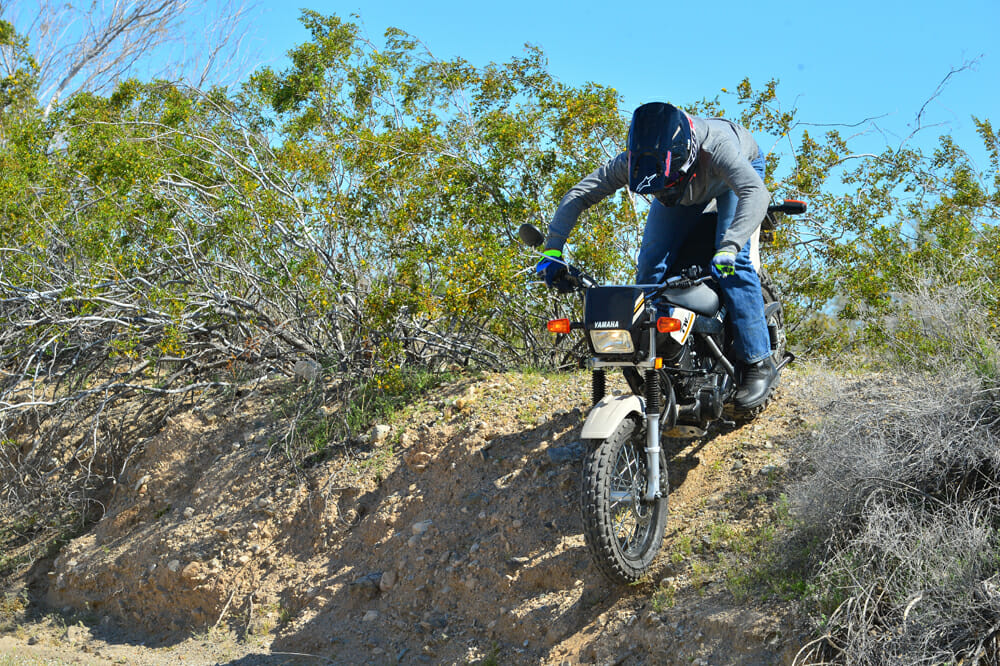 The TW200 just loves to go over things, that’s what it does best.
The TW200 just loves to go over things, that’s what it does best.
Fun to ride? How can that be? Agreed, on paper, the TW200 doesn’t sound like a fun motorcycle to ride because of its 1980s technology, more specifically, because of its drum rear brake, sub-seven inches of wheel travel, archaic non-adjustable suspension and, of course, funny-looking tires. Performance-wise, it’s certainly not fast (and that’s no secret), it doesn’t handle particularly great, and its suspension, well, you can only imagine. High-tech the TW200 certainly is not. Still, the TW200 is a fantastic little motorcycle that’s fun to have around. Maybe that’s because it’s not high-tech and doesn’t require a lot of maintenance but is instead simple and easy to live with, and who doesn’t want that?
So, what is the TW200 anyway? Some call it an ATV with two wheels, others call it an ag bike, or a farm bike, but most of us call it a funky little dual-sport bike, which is how Yamaha classifies it (not the funky part, though), as it should because it really is a trail bike with a license plate on the back. It runs off an unsophisticated but proven low-compression air-cooled 196cc, two-valve SOHC four-stroke single-cylinder engine fueled by a 28mm Mikuni carburetor. It transfers all of its 13 or so horsepower to the rear wheel via a wet multiplate clutch and manual five-speed transmission. The most high-tech things on the TW200 are its electric starting system and front-disc brake, which it got in 2001, the year the TW received its only real upgrade. It also got a CV carburetor that year, and the manual back-up kickstarter lever was removed.
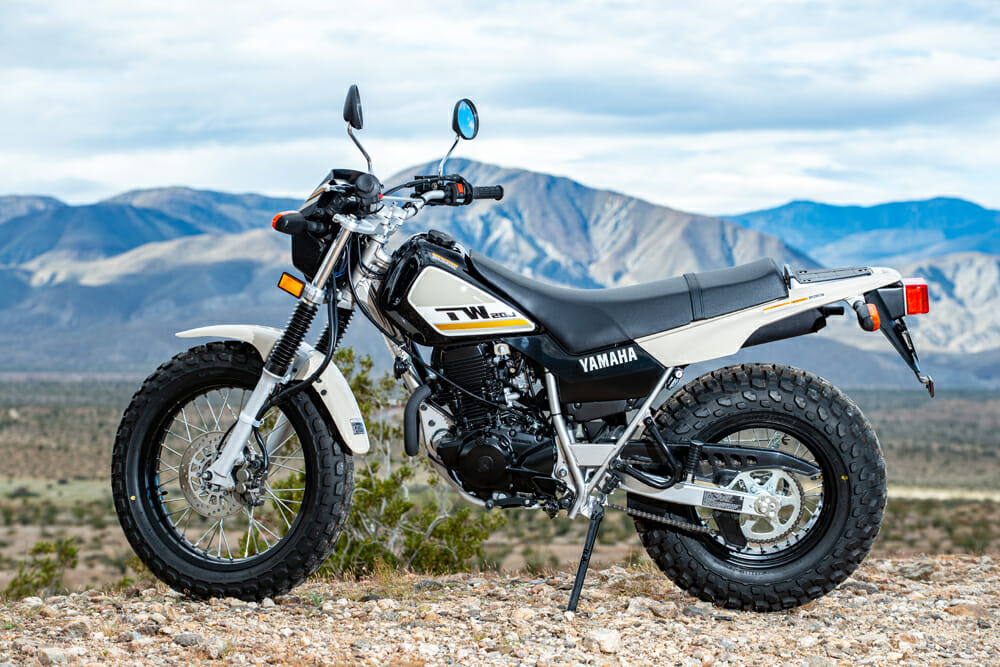 The TW200 hasn’t changed much since its debut in 1987. Its last update came in 2001 when the front drum brake was replaced by a disc and it got a CV carburetor.
The TW200 hasn’t changed much since its debut in 1987. Its last update came in 2001 when the front drum brake was replaced by a disc and it got a CV carburetor.
It’s low 9.5:1 compression means it will run on just about anything, which is a good thing when traveling in places where gasoline might not be of the highest quality.
The suspension is made up of a no-frills 33mm telescopic fork with 6.3 inches of wheel travel up front and a single shock swingarm setup up with 5.9 inches of wheel travel in the back. Neither is adjustable.
The TW has a very-low and inviting 31.1-inch seat height, standard instrumentation, and a modest 1.8-gallon fuel tank. It weighs just under 280 pounds.
But what makes the TW a TW is its “fat” tires. And it’s because of these fat tires that the TW still exists today. These tires give the TW its unique personality and, more importantly, the ability to go places where most motorcycles—or any vehicle for that matter—can’t, or at least not nearly as easily.
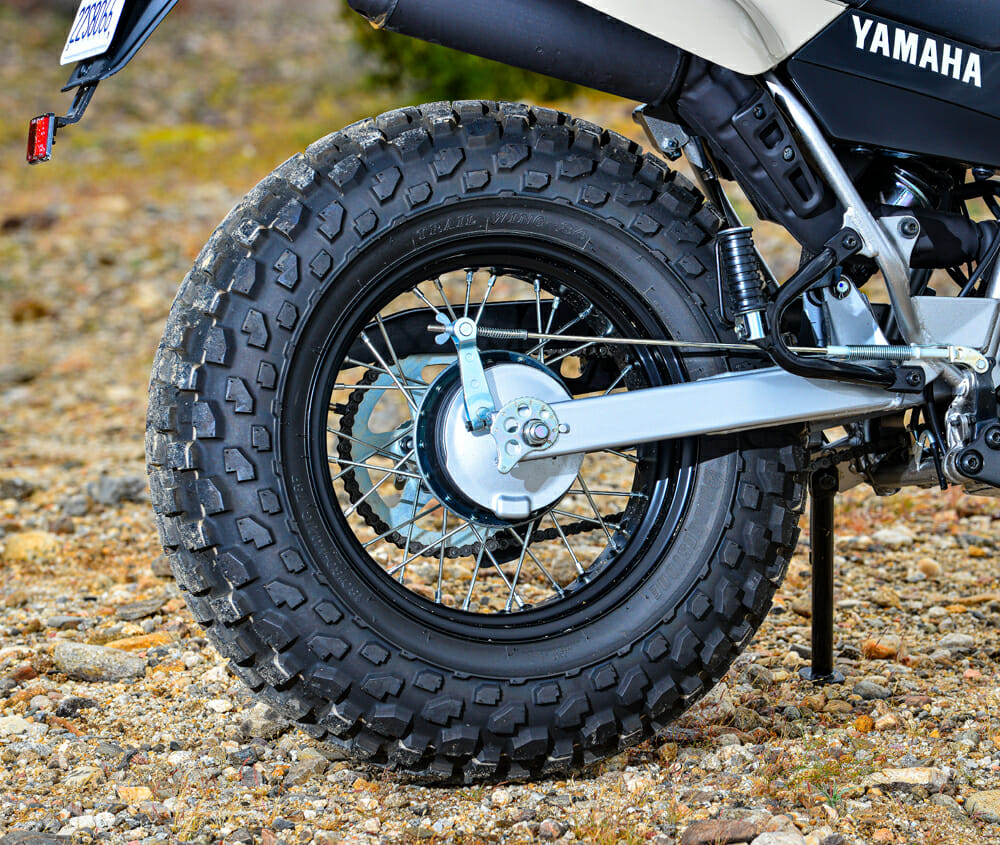 Here’s what makes the TW a TW—its fat rear tire. The old-style drum brakes work just fine for the type of riding you’ll be doing on a motorcycle like this.
Here’s what makes the TW a TW—its fat rear tire. The old-style drum brakes work just fine for the type of riding you’ll be doing on a motorcycle like this.
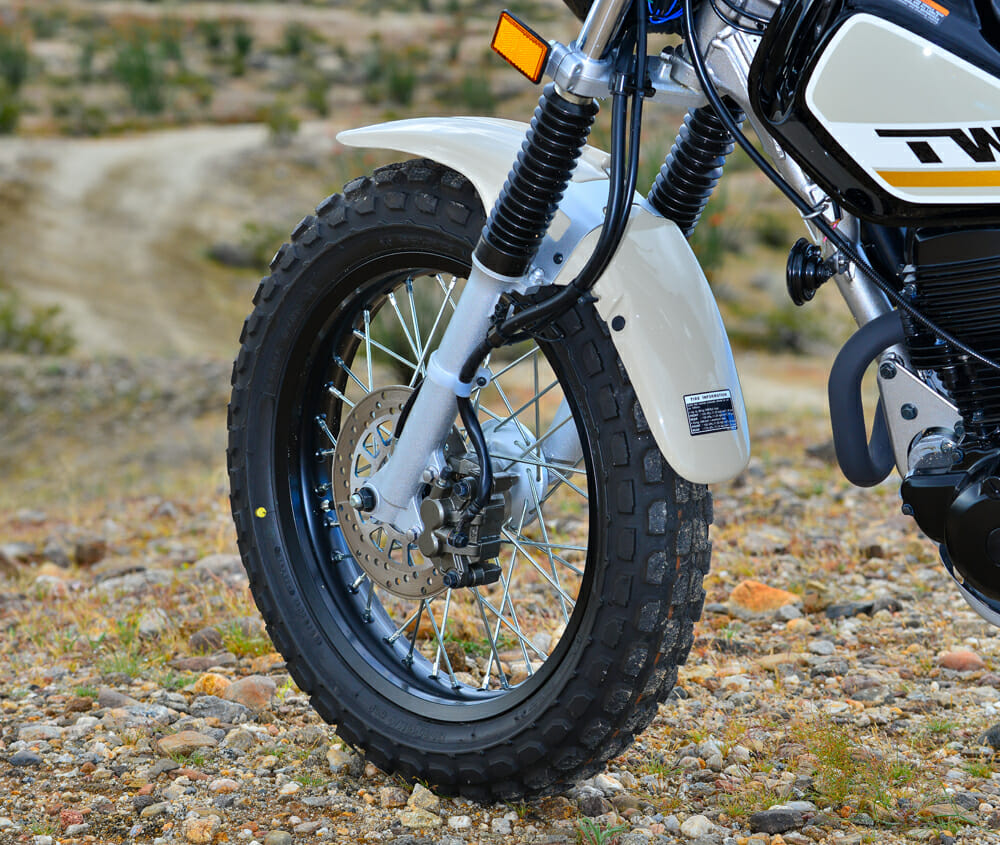 The front tire isn’t as fat but fat enough. The TW’s big tires makes riding in sand and on loose terrain much easier than with “standard” tires, making it great for beginners.
The front tire isn’t as fat but fat enough. The TW’s big tires makes riding in sand and on loose terrain much easier than with “standard” tires, making it great for beginners.
The TW’s chubby tires combined with the bike’s low seat height, small overall size, and unintimidating engine make it an excellent go-anywhere machine that is also perfect for the beginner. It’s also great for the experienced rider who wants to do some hard-core backcountry exploring on rarely used roads or trails—as long as you don’t mind doing so at creeping-crawling speeds, because the TW isn’t meant to be ridden fast or hard, just over stuff. The TW’s low gearing is proof of that.
As far as going fast, the non-adjustable suspension simply prevents this from happening, at least on the dirt. The 5.9 inches of travel in the back feels more like two inches and doesn’t do much to smooth out the ride, and the fork isn’t any better. And don’t even think about jumping the TW; well, jumping it fine, but the landings are brutal. In the big picture, though, the suspension is okay, just as long as you keep the speeds down when it gets bumpy. The TW is more about just going up and over things than going fast. It’s the John Deere tractor of motorcycles.
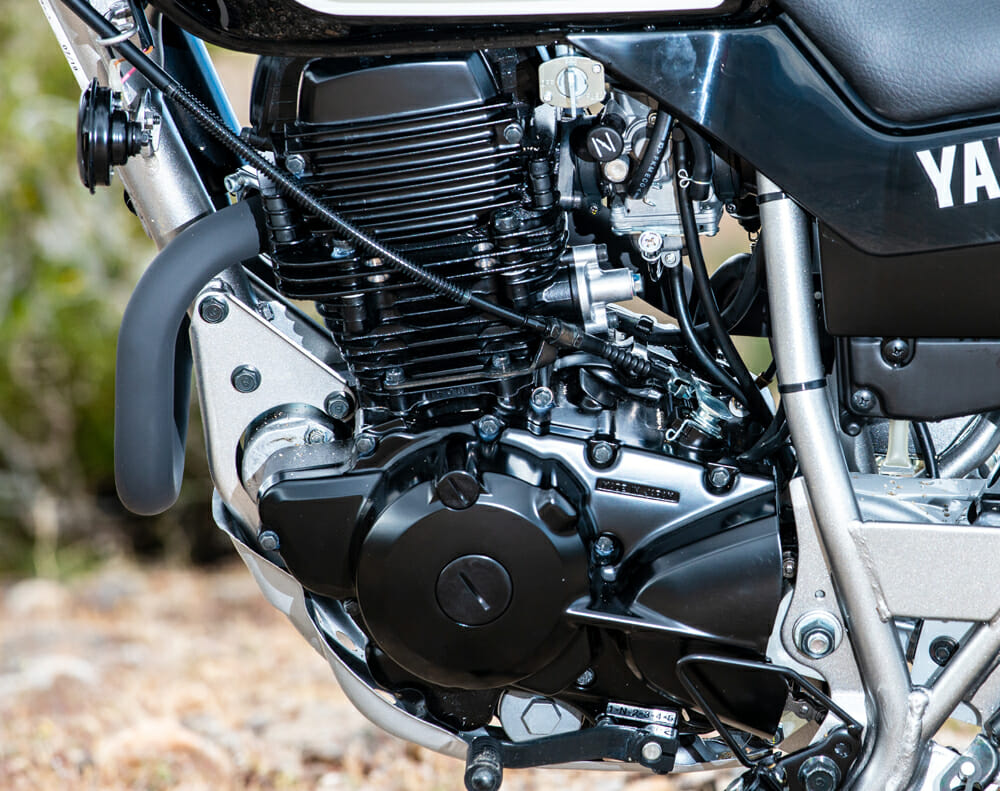 It doesn’t get much simpler than this. The TW’s 196cc air-cooled two-valve four-stroke engine is a workhorse and won’t let you down.
It doesn’t get much simpler than this. The TW’s 196cc air-cooled two-valve four-stroke engine is a workhorse and won’t let you down.
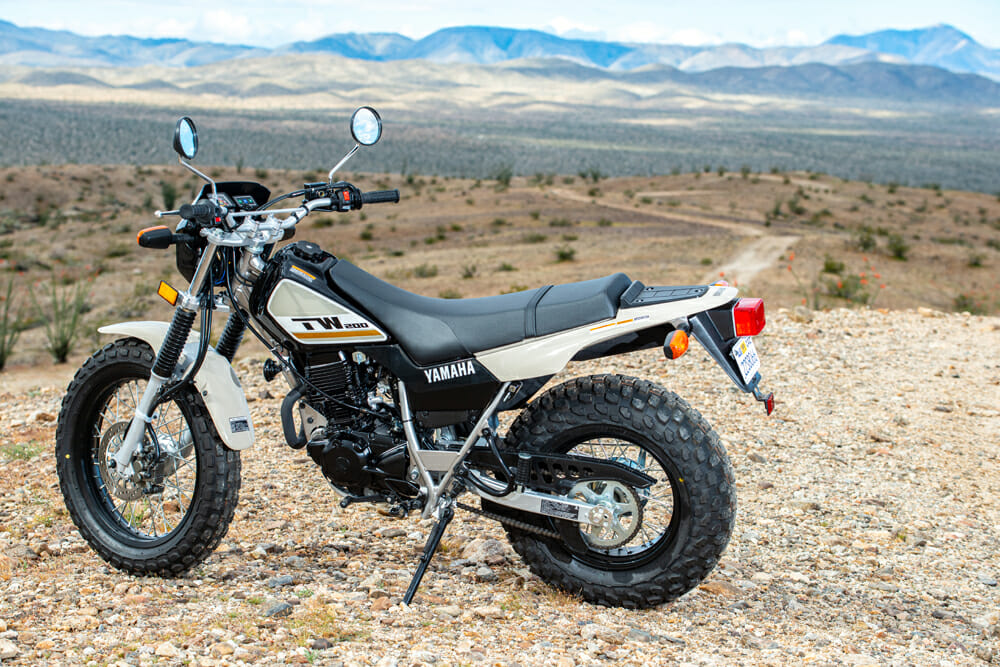 The TW200 is an excellent little motorcycle to learn on because of its low seat height, unintimidating power and sure footedness.
The TW200 is an excellent little motorcycle to learn on because of its low seat height, unintimidating power and sure footedness.
The engine makes just enough unintimidating power to still be fun. It will torque you up just about any hill, ravine or boulder, and rarely stumbles or stalls, even at walking speeds. It just goes and goes and goes and never complains. It’s also quiet, so no one will hear you while you’re out there exploring the hills, and it has proven itself over the years to be extremely reliable, so you don’t have to worry about getting back to camp, hopefully, before the sun goes down. The TW’s headlight isn’t great, but it is better than nothing. We’re just spoiled by LED and other high-tech lighting systems on so many of today’s motorcycles.
The only thing we really don’t like about the TW’s motor is starting it—it’s incredibly cold-blooded. It takes a long time to warm up and stop sputtering.
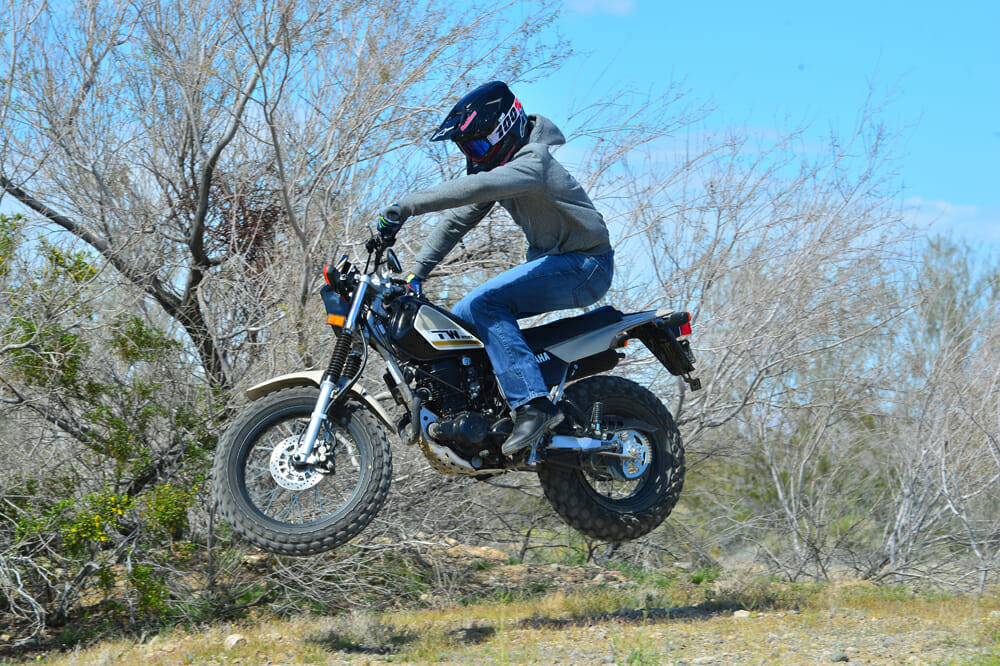 The TW200 isn’t really a jumper. It can do it, but the landings are brutal.
The TW200 isn’t really a jumper. It can do it, but the landings are brutal.
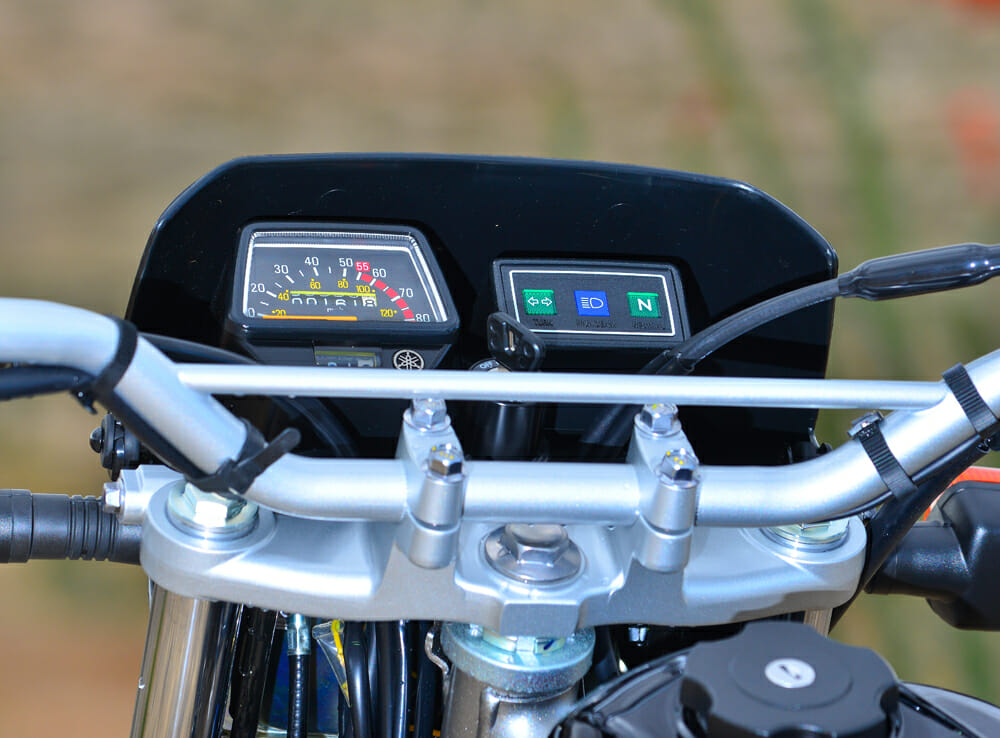 Instrumentation is basic, but, really, what else do you need to know?
Instrumentation is basic, but, really, what else do you need to know?
Despite the big tires, the TW still steers and corners like a regular-wheeled dirt bike, at least more so than you’d think. Where the TW’s fat tires shine is in the soft sand. Sand washes are a beginner’s worst nightmare, but the TW’s tires make riding in the soft and loose stuff so much easier and, in some cases, merely possible when it’s not on a bike with “normal” skinny tires, at least that was the case with one of our novice test riders. The TW also loves to be ridden in the mud because that big rear tire can find traction where, again, skinny tires can’t. The TW also excels on loose rocks and gravel, basically, on anything that isn’t permanently attached to the earth. Again, this is what makes the TW stand out over any other motorcycle—its ability to stick to just about everything.
At a claimed 278 pounds, the TW200 isn’t exactly light, but because of its small size, low seat height, and lighter-than-you’d-think steering, it doesn’t feel too bad on the trail until you have to pick it up after a fall, or when you land from even the smallest of jumps.
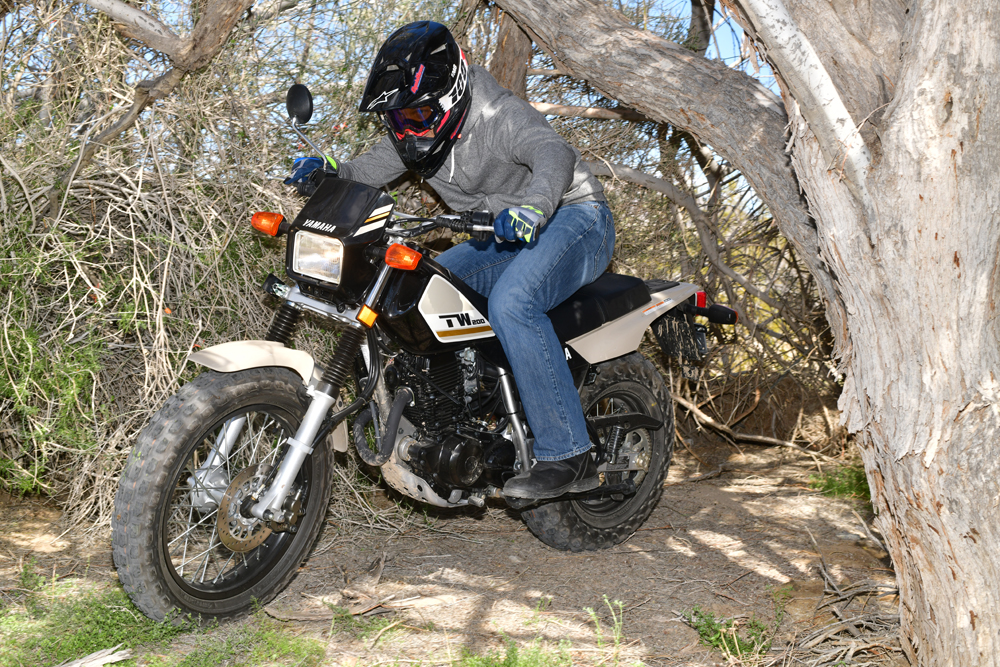 The TW200 will go just about anywhere but not quickly.
The TW200 will go just about anywhere but not quickly.
While the fat tires are great for the dirt, they are also pretty good for the pavement. Here, the big tires do make the TW feel a little sluggish in the handling department, but at least you always know that traction is there at all times. The TW is a great urban motorcycle but stay away from the highways. The TW tops out around 60 mph, but that’s not a realistic speed for this little guy. Even 55 mph is pushing it; 45 mph seems to be the TW’s sweet spot for the open highways. You could gear it up but then you’d lose some of the TW’s excellent rock-crawling capabilities.
The 1.8-gallon fuel tank might seem small but should get you approximately 70 miles (but Yamaha says 78) in one filling, which is plenty for any single sitting on this bike because your average top speed per ride probably won’t be very high most of the time, so you’ll be ready for a long break after 70 miles on the TW.
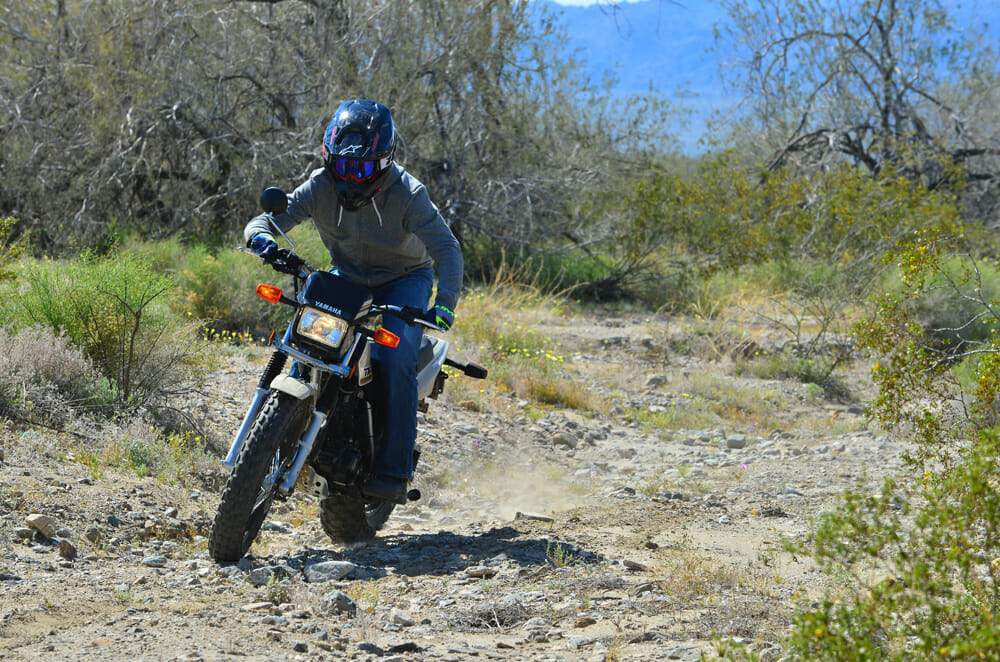 Even experienced riders can have a ton of fun on the TW200.
Even experienced riders can have a ton of fun on the TW200.
Even after all these years, there isn’t much not to like about the TW200. Yes, the suspension is far from stellar, the footpegs are tiny, and the TW isn’t exactly pretty, but it is an excellent little motorcycle for the beginner and a ton of fun for the experienced rider who understands what this bike is all about. It’s a motorcycle that is just plain fun to ride on the trails, but with the TW, the cool thing is you don’t even need a trail to have fun on it. Just point it and go and whatever gets in your way, so be it. It’ll go right over it.CN
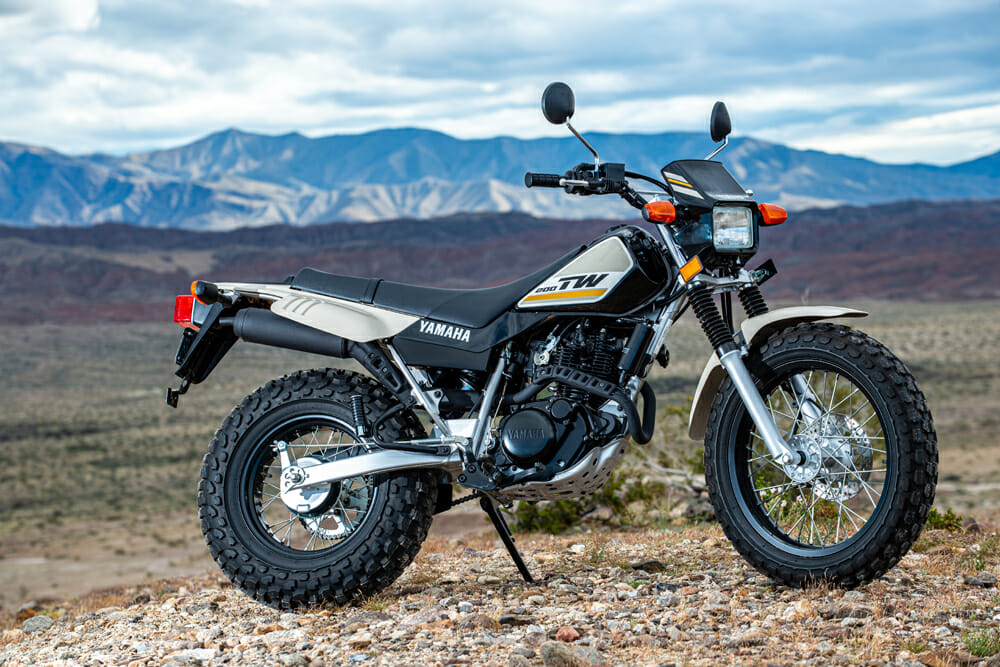
|
|
| MSRP: |
$4,599 |
| Engine Type: |
Air-cooled, single-cylinder, 4-stroke, 2-valve, SOHC |
| Displacement: |
196cc |
| Bore x Stroke: |
67.0 x 55.7mm |
| Compression Ratio: |
9.5:1 |
| Fuel Delivery: |
Mikuni 28mm |
| Ignition: |
CDI |
| Transmission: |
Constant-mesh 5-speed |
| Clutch: |
Wet, multiplate |
| Final Drive: |
Chain |
| Front Suspension: |
Telescopic fork |
| Rear Suspension: |
Single shock |
| Front-Wheel Travel: |
6.3 in. |
| Rear-Wheel Travel: |
5.9 in. |
| Front Brake: |
1 220mm disc |
| Rear Brake: |
110 Drum |
| Front Tire: |
130/80-18 in. Bridgestone Trail Wing |
| Rear Tire: |
180/80-14 in. Bridgestone Trail Wing 34 |
| Seat Height: |
31.1 in. |
| Wheelbase: |
52.2 in. |
| Rake: |
25.8° |
| Trail: |
3.4 in. |
| Ground Clearance: |
10.4 in. |
| Fuel Capacity: |
1.8 gal. |
| Fuel Economy (claimed): |
78 mpg |
| Weight (wet, claimed): |
278 lbs. |
| Color: |
Sandy Beige |
